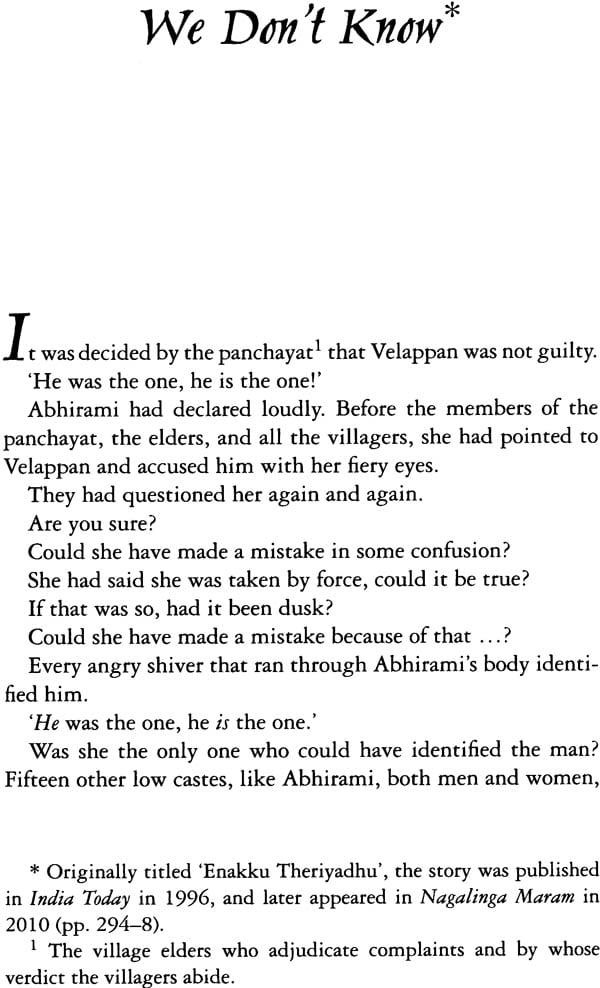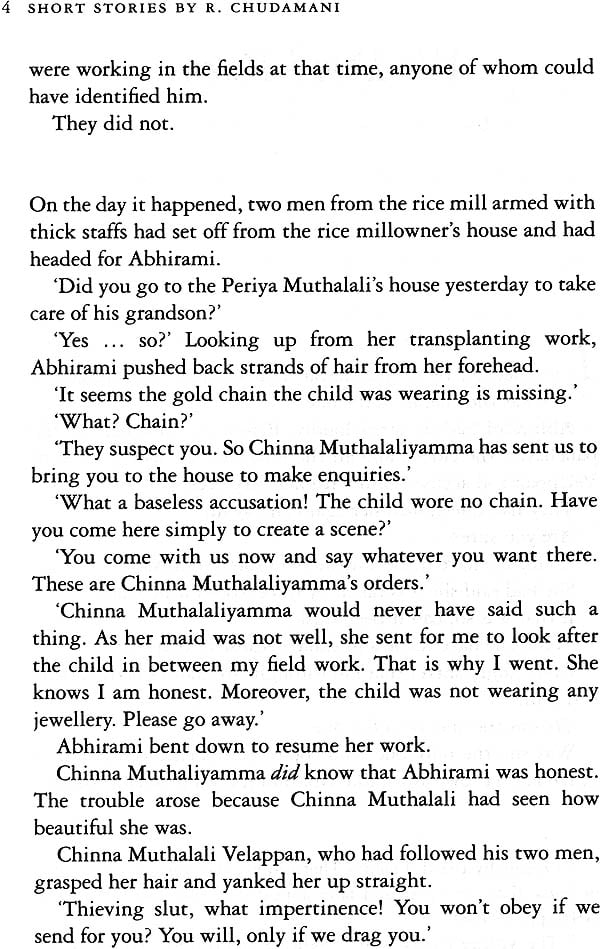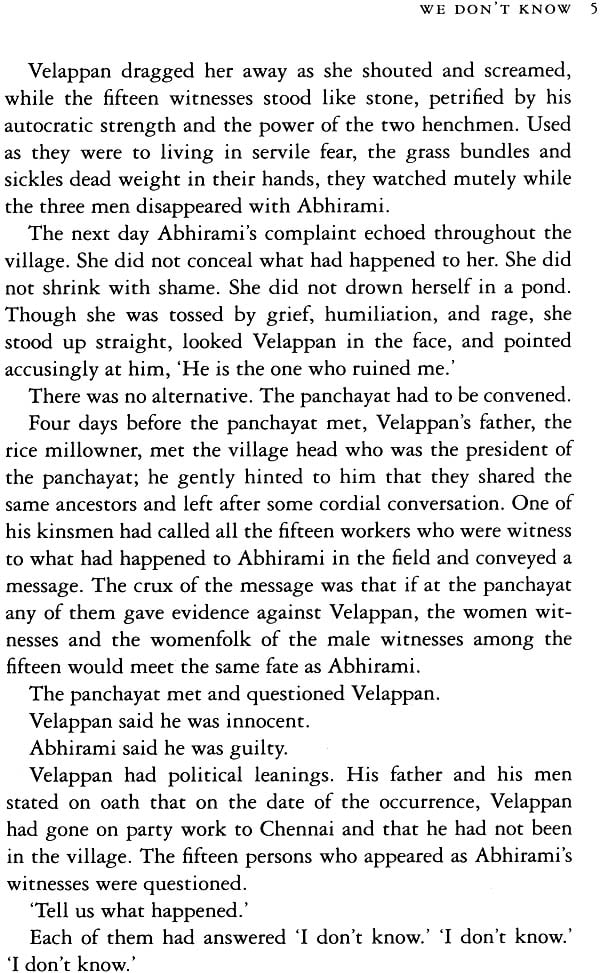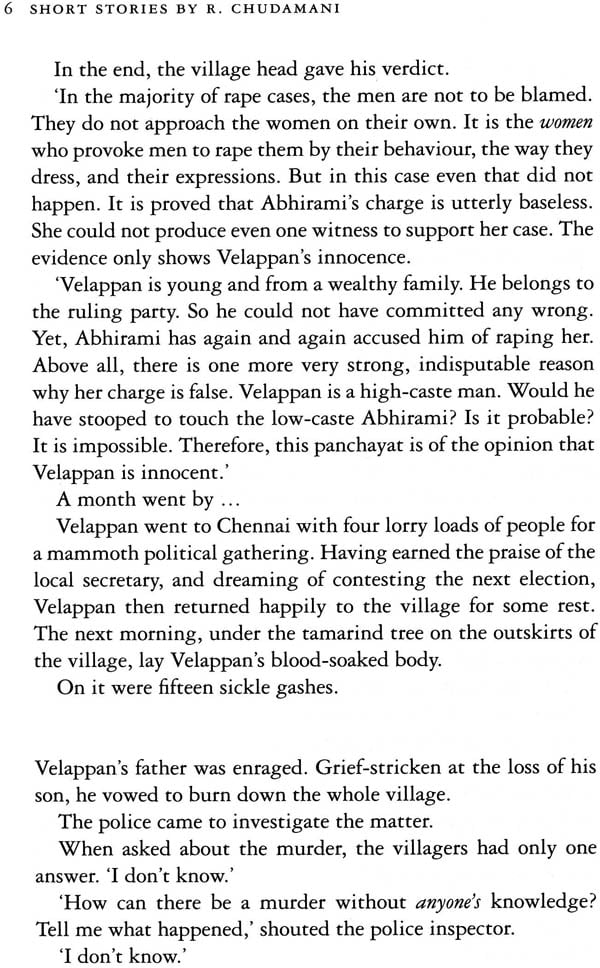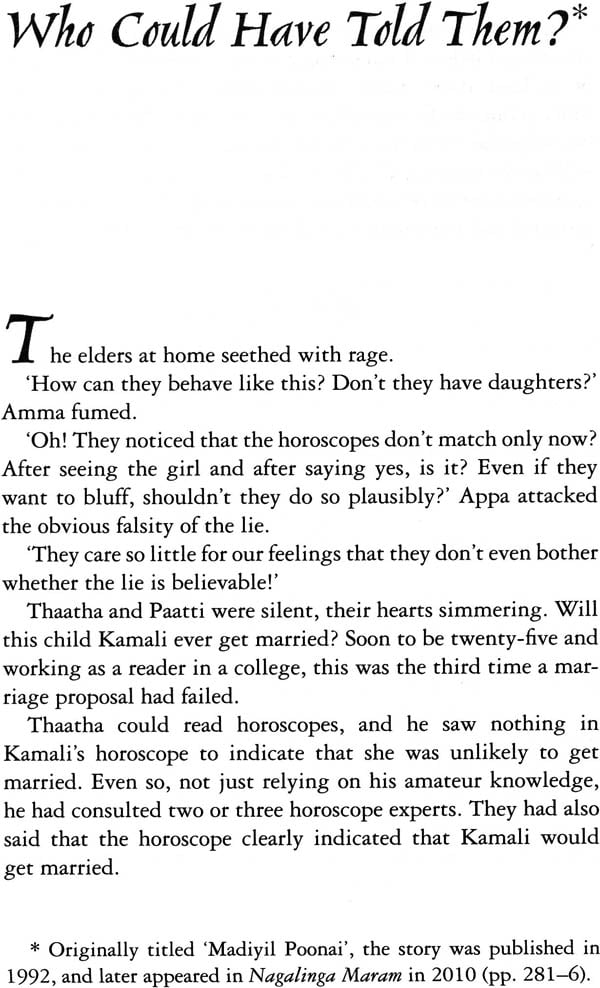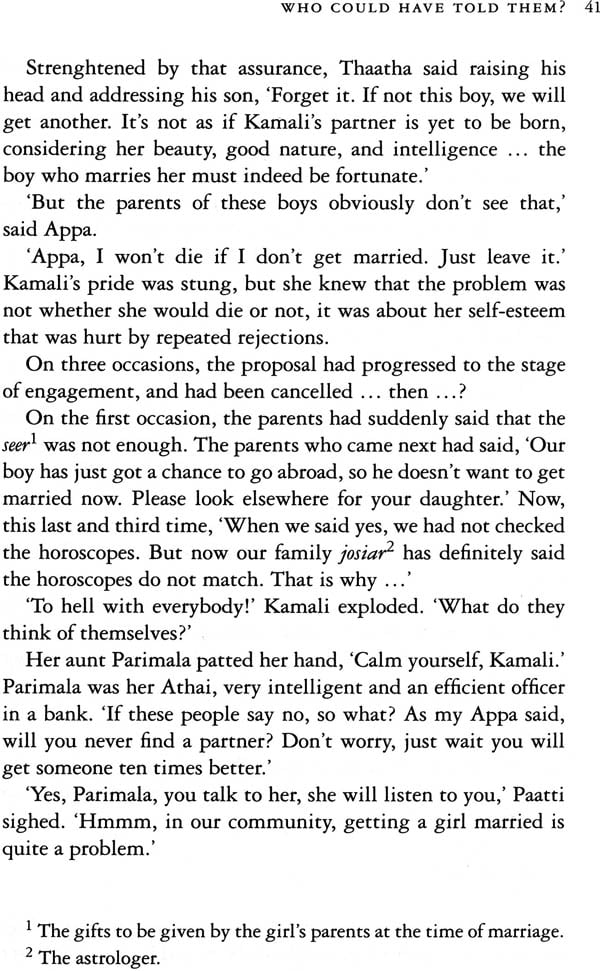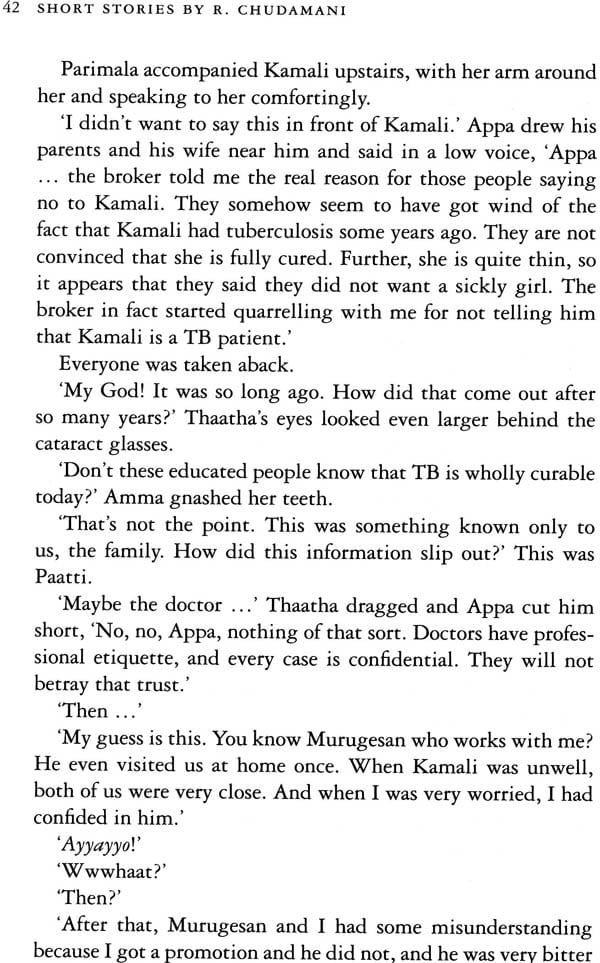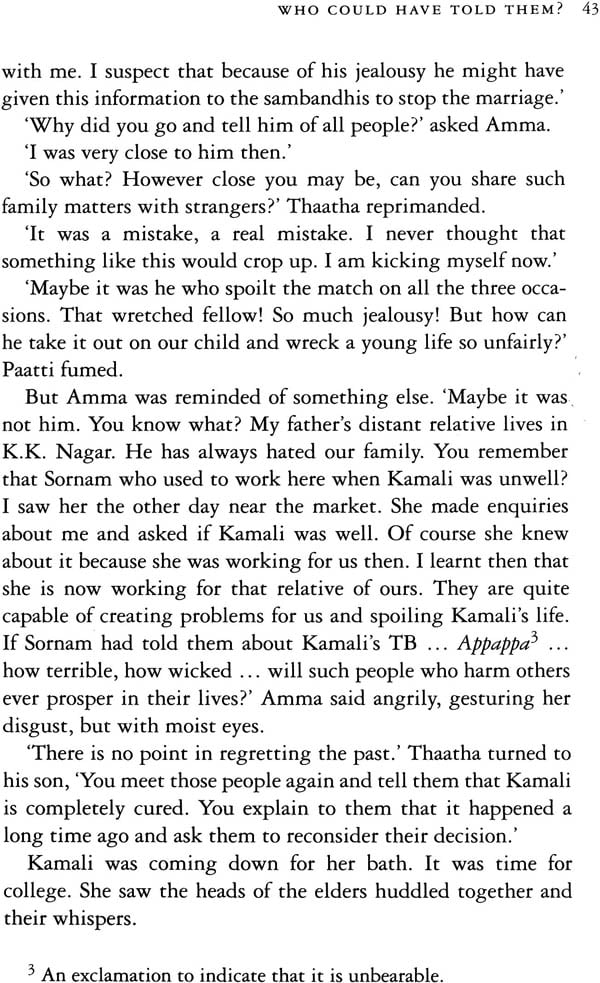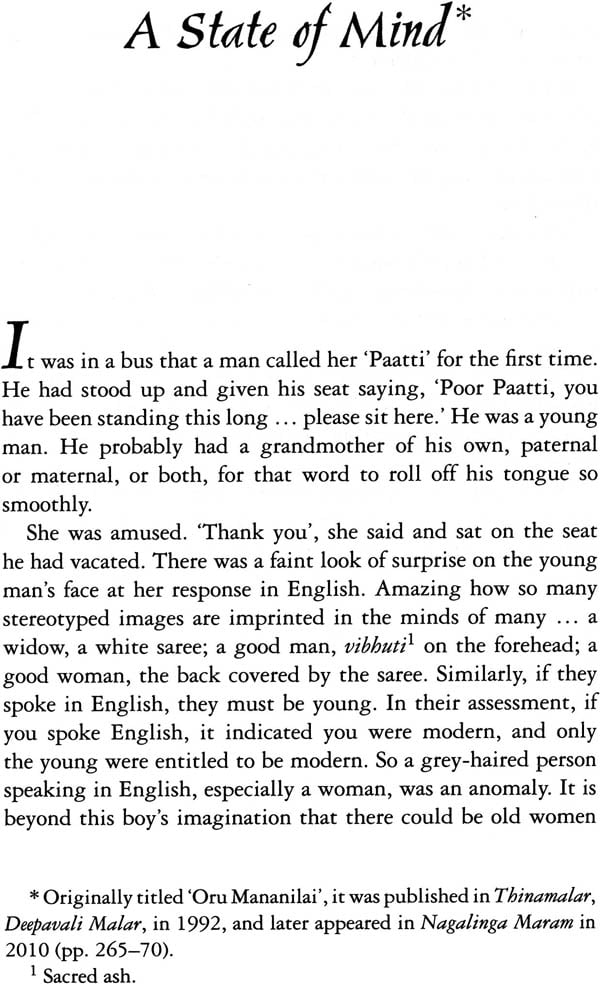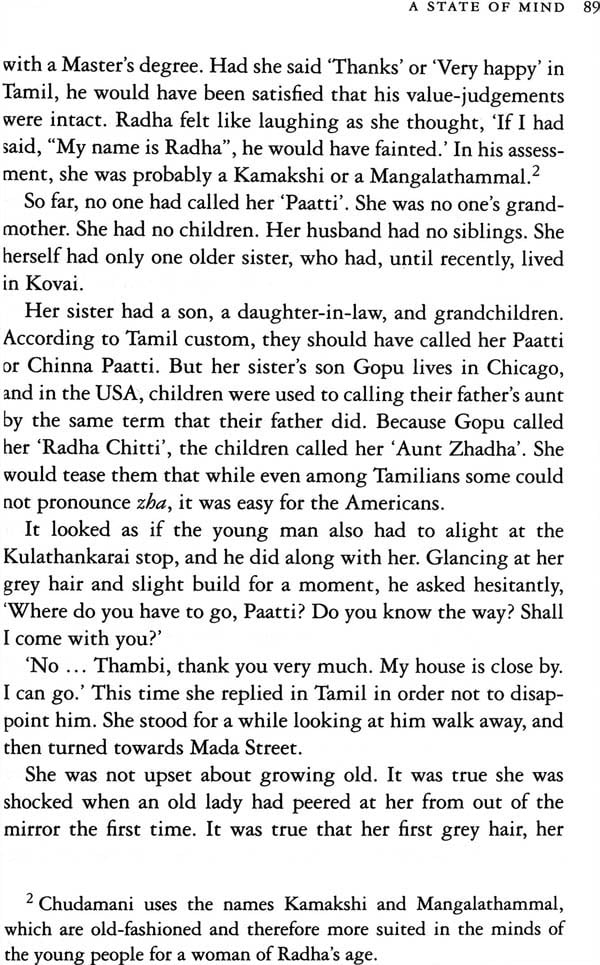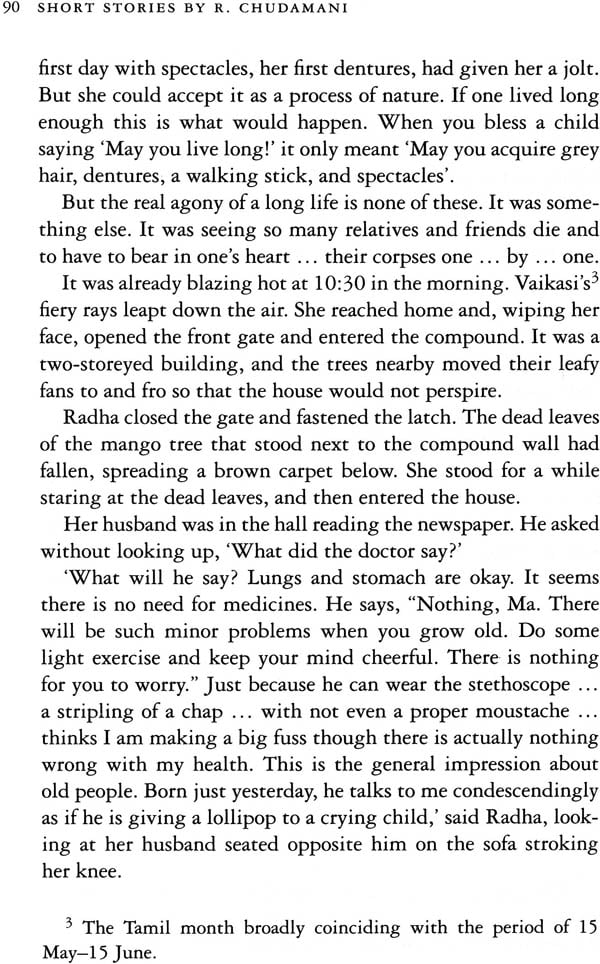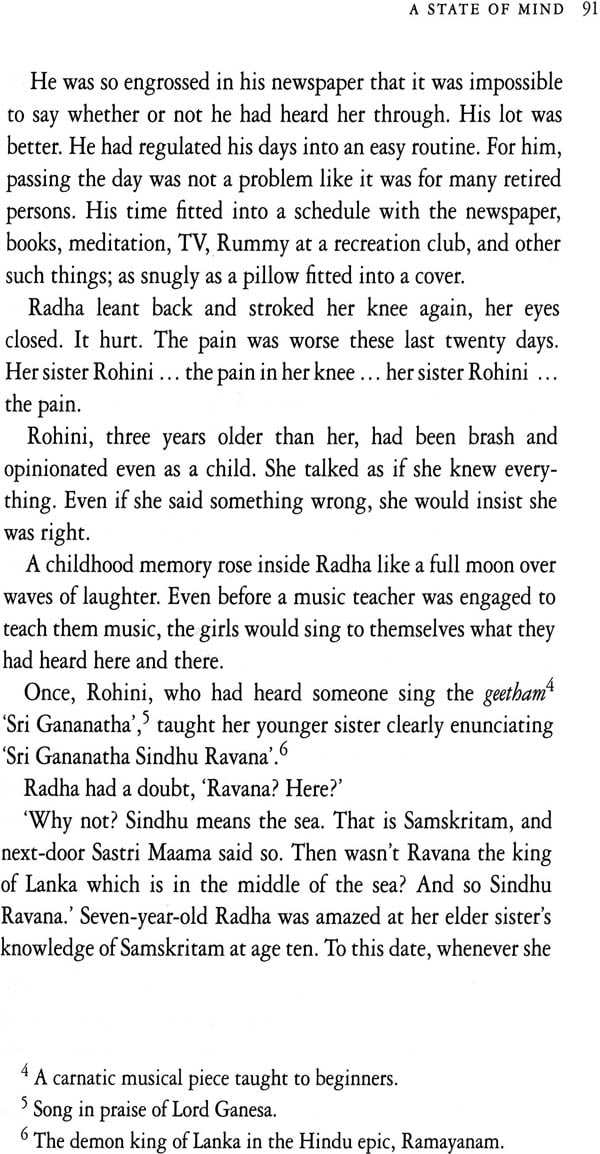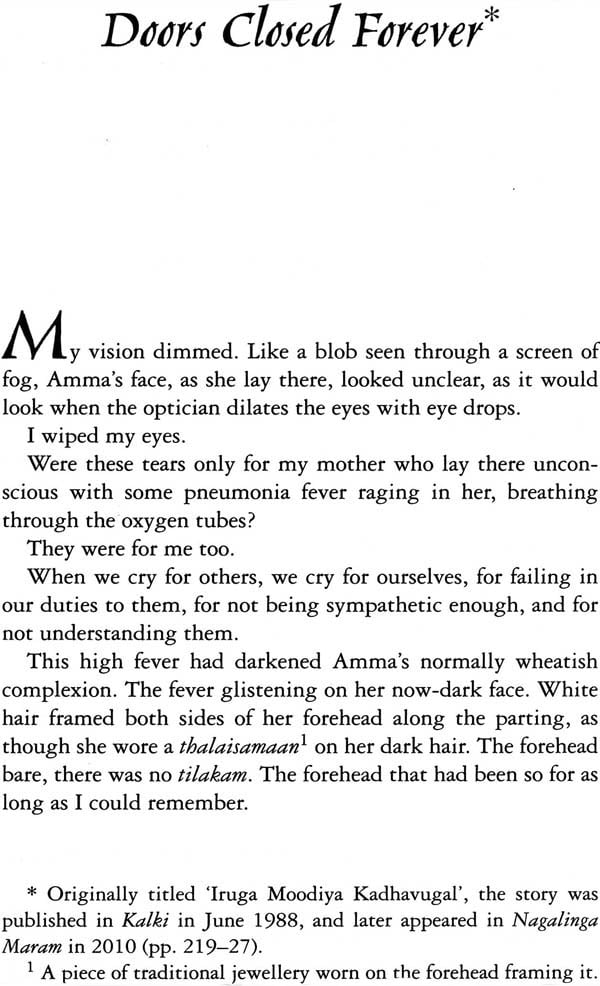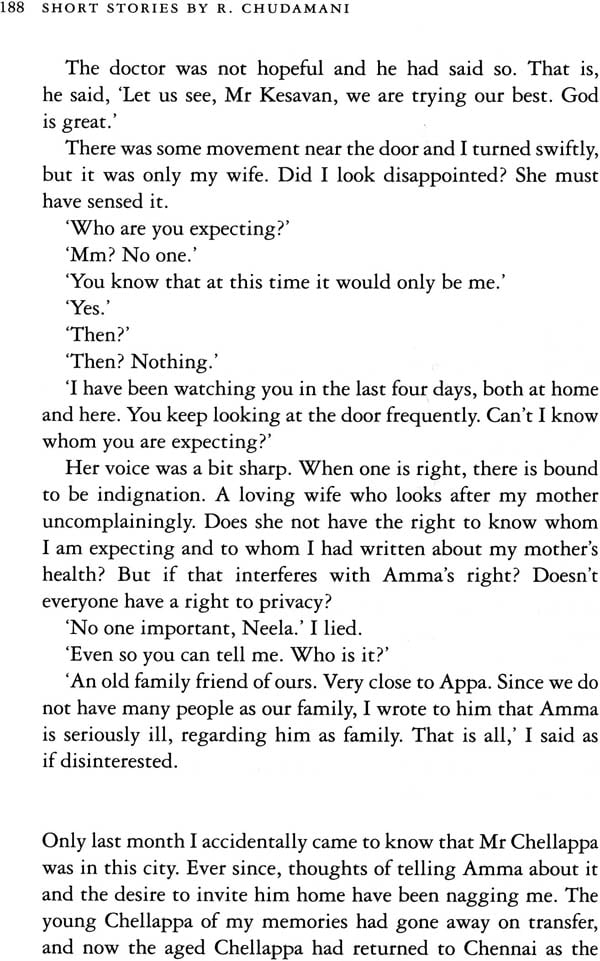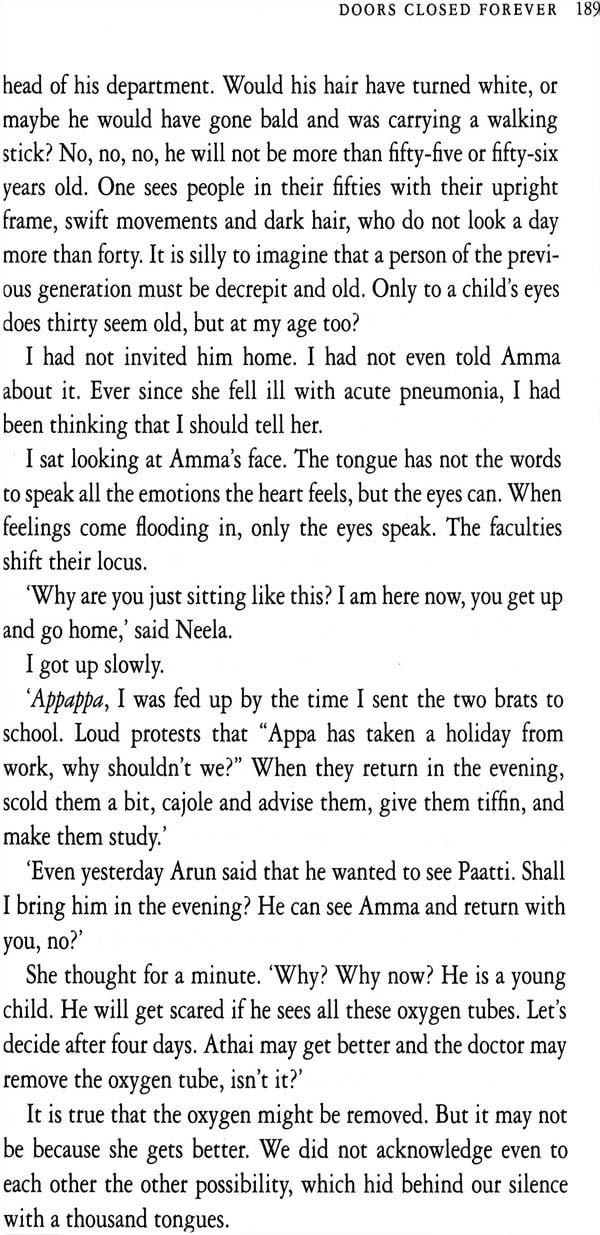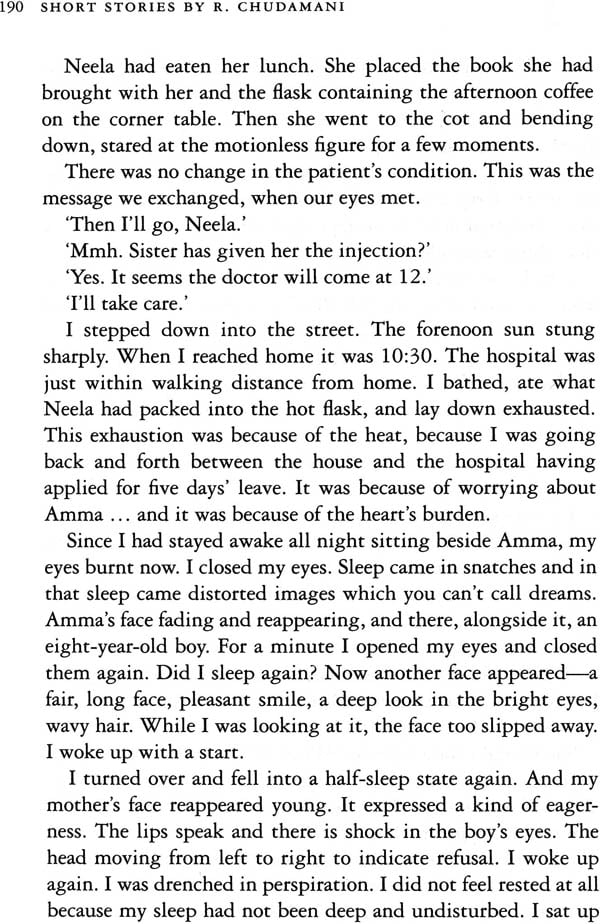
Seeing in the Dark
Book Specification
| Item Code: | NAL907 |
| Author: | R. Chudamani |
| Publisher: | Oxford University Press, New Delhi |
| Language: | English |
| Edition: | 2015 |
| ISBN: | 9780199459674 |
| Pages: | 374 |
| Cover: | Paperback |
| Other Details | 8.5 inch X 5.5 inch |
| Weight | 270 gm |
Book Description
R. Chudamani (1931-2010) was a respected Tamil writer, who has to her credit about 500 shourt stories. She had no formal education due to frail health. She began publishing in Tamil in 1954 and in English in 1962. She has 32 volumes of fiction to her credit that include short stories, novels, and plays. Her writing are marked by uncommon sensitivety, a laser vision capturing the vibrations in the inner recesses of the human emotional realm, and a subtlety which avoids pronouncements. She lived a life of great nobility and of silent charity. She willed her entire estate to a few deserving institutions involved in humanitarian service.She received the Kalaimagal Siver Jubilee Prize for her story ‘Kaveri’ (1957), the Narayanasami Aiyar Prize (1959) and the Tamil Nadu Government Prize for her novel Manathukku Iniyaval (1966), the Ananda Vikatan Prize for the drama Iruvar Kandanar (1961), the Bombay Tamil Sangam Silver Jubilee Prize for the drama Arunodayam (1966), the Ilakkiya chinthani’ (1972), and the Kalaignar Mu. Karunanidhi Award in the category of fiction (2009). Her short stories have been translated into many Indian languages and English.
R. Chudarnani's first story was published exactly sixty years ago. She was not yet twenty-five but this beginning would become her spiritual support for half a century and more. The 2010 collection Nagalinga Maram came with Chudamani's autobiographical reminiscence (1999) about her first story that was published in 1954, 'Parisu Vimarsanarn'. She was twenty-three, and she was excited. Parental encouragement lit up her world. Her father had patted her and made an illuminative comment, 'Not bad at all. Relativity theory of a different kind! Write a lot!' He was certainly an intuitive critic. Going through Chudamani's five hundred stories, as also her dramas and novels, one recognizes her effortless art of connectivity. All problems can be solved if only we know how to connect. Oh, these barriers raised by customs, by preconceived notions regarding social barriers, class, and the ubiquitous sense of caste!
In 1958, my mother-in-law, the legendary writer Kumudini, took me to meet her, for they were distant relatives. Being a young bride, I was shy but sat fascinated when they discussed one of her recent stories. Prompted by my mother-in-law, I went forward and gave Chudamani my first book which had been published just then. She smiled in an angelic way and was happy to know that I had not given up my doctoral studies after marriage. 'You have a mother-in-law who will encourage you no end,' she said. She stood up when we took leave of her. Only then did I realize that she had a problem with her feet and that she was unusually short. Suddenly, I felt a wave of strength in me. One must face life with a heroic smile like this writer! I never met her again but she has remained an inspiration, an image of 'the courage never to submit or yield'.
She was a tireless writer who handled several genres like novels, plays, and novellas. Even poetry. All that she wrote could be termed as a sincere recordation of life as she knew it with just that shadow behind, which the artistic imagination tried to seize and convey as a meaningful experience. She would never give into any primitive cry of hatred nor weave gossamer romances of idealistic utopias. She has given us her view of social culture in independent India, warts and all.
What then was her base when she could not become a part of the hurly-burly of life, of travelling in crowded buses, of having to struggle as a worker in the world or a housewife at home? Where should we look for that experiential reality which gives an utter naturalness to the flow of Chudamani's storytelling?
A prefatorial remark in a reprint of a collection of her stories reads:
Her stories written in an uncomplicated style, opened in the fifties with simple thoughts. Her writing slowly acquired an inner strength as the decades passed by. In the sixties she had mastered the art of story-telling. By the seventies she could make the critic sit up with wonder. As the rest of the century moved forward, one could notice how effortlessly she could touch high spires in creativity.
A fair-enough approximation to Chudarnani's creative fire which burnt steadily, marking a subtle progression but never rising to a self-destructive blaze. Chudamani remained herself upto the end. Not for her 'the fumes of scorching flesh and smoking blood'. Her subject was the home, and her prime inspiration came from herself, her family, and immediate circle of friends and household servants, as though she was watching the events with half-shut eyes, ready to forgive, and, of course, forget.
Naturally, the subterranean grottos of human emotions that format the stage in these tales call for conversations that are not heard in the physical. They rise in the mind and subside there. 'Nothing Ever Happens' (Nigazchi) is a sliver of stream of consciousness like Chudarnani's style, which is one long exploration of human behaviour. There are occasional exceptions but generally external action is consigned to the minimum when the author proceeds to analyse her characters caught in varied situations.
Women and children are predominant in these fictional structures. A sensitive woman who had not allowed resentment to enter her heart, Chudamani uses three approaches to get at the truth that determines patterns of behaviour. The woman seen by herself (as in 'Neelayathakshi Ammal: Arupathu Vayadhu' {Neelayathakshi at Sixty]); the woman scrutinized by other women (as discovered in short stories like 'Iruttil Irundhaval' {Woman in the Dark]); and the woman analysed by men (as found in 'Sobhanavin Vazhvu' {Seeing in the Dark]). In this world generally crenellated by women, we have children observed with acute perception by Chudamani. Though each story is independent, together, they form a vast tapestry of clearly defined paintings (she was herself a painter) that leave no ambiguous endings. Not for her sententious elegances or romantic claptrap. She saw the world of human affairs more as a vile mix of ignorance and cupidity and was amazed that men and women could not count their blessings but remained slaves to their body-hankering after adulation, affection, admiration, pomp, and pride. Which is perhaps a reason for the frequent theme of marital infidelity in the stories, for example, 'Dhandanai' (He Is Not in Town) and 'Iruttil Irundhaval' (Woman in the Dark).
Chudamani does not take sides. Mostly, it is the woman who often becomes a hurdle to herself and her family, and finally has to bear the brunt of societal abhorrence. She has to be subservient to maintain peace at home. She has to conform to the received tradition. And the received tradition in Tamil Nadu has been inimical to women from times immemorial. Consider the inequalities based on gender in the Sangam Age. For instance, the concept of chastity (karpu) was associated only with female chastity. Interestingly enough, there is no instance of a woman giving in to adultery in Sangam literature. But a man could spend his time with parathais with abandon, as the community of courtesans was institutionalized. As for the treatment of widows, it is a tragedy too deep for tears. Here is a young lady pleading with the potter in the ancient Tamil anthology Purananooru, for a bigger burial urn, so that she can join her dead husband to reach the unknown:
| Translator's Note | ix |
| Introduction: Unfolding Wings of Thought in the Inner Air … | xvii |
| Kinship Terms | xxxiii |
| A Trace of Envy | 1 |
| We Don't Know | 3 |
| That Fragile World | 8 |
| Bhuvana and the Star Sign | 18 |
| The Nagalinga Tree | 29 |
| Who Could Have Told Them? | 40 |
| Seeing in the Dark | 46 |
| Ascent to the Shrine | 59 |
| After Three Years | 69 |
| Growing Up, Growing Apart | 77 |
| A State of Mind | 88 |
| He Is Not in Twon | 95 |
| The Downpour Outside | 106 |
| Nothing Ever Happens | 117 |
| Doctoramma's Room | 124 |
| TV Aunty | 131 |
| Heat and Her Hands | 149 |
| Does Anyone Care? | 157 |
| Women in the Dark | 170 |
| The Visitor | 177 |
| Doors Closed Forever | 187 |
| Neelayathakshi at Sixty | 196 |
| The Couple | 208 |
| The Fourth Stage of Life | 219 |
| LOSS OF Crest Just by Ambai | 233 |
| About the Author and the Translator | 238 |
